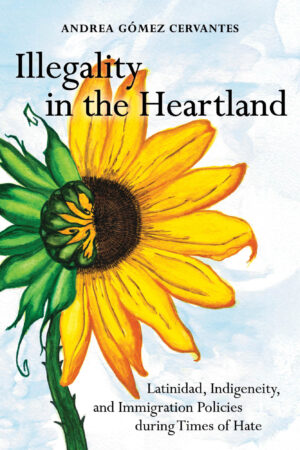Enduring Times of Hate
by Andrea Gómez Cervantes, PhD, author of Illegality in the Heartland: Latinidad, Indigeneity, and Immigration Policies during Times of Hate
Vivimos encerrados [we live locked/trapped] inside the house. Renata, an Indigenous Tlapaneco Guatemalan woman shared her worries of leaving her house, even to go to the grocery store or to work, which left her and her family feeling trapped inside their one-bedroom apartment. It was the earlier part of the first Trump administration. Immigrants, especially anyone suspected of looking undocumented, lived in a constant state of vigilance and fear that they could be apprehended at any time and at any place, possibly tearing their families apart and losing everything they had worked for in the many years they had lived in the US heartland. The fear that kept families like Renata’s trapped inside their homes has returned, and has been multiplied with billions of funding towards immigration enforcement. Today’s Trump administration, supported by the courts, have amplified the use of racial profiling to target, apprehend and deport anyone suspected of being “undocumented” which in the United States is equated with socially constructed ideas of “looking Mexican” or “looking Latino” more broadly. These stereotypes of who is considered “illegal” are shaped by the interconnectedness of colonial powers reproduced in the existing immigration/detention bureaucracy, leaving especially Indigenous migrants (and non-migrants) and those with darker skin tones at higher vulnerability, particularly in places with a smaller immigrant population, such as the US heartland.

Illegality in the Heartland examines the lives of Latin American Indigenous and mestizo immigrants, centering their voices and experiences, during the first Trump administration, a time of growing anti-immigrant sentiment. I examine the impact of changing policies on immigrants’ family dynamics, community building, inter-ethnic relationships, and work and educational experiences. Importantly, the book challenges existing understandings of Latinidad and migration in a place that is traditionally not thought of as an immigrant destination. While Indigenous and mestizo immigrants face similar legal exclusions based on their immigration status, Indigenous migrants encounter additional burdens and violence grounded in anti-Indigenous discrimination enacted by not only the institutions and public spaces they interacted with, but also by fellow mestizo migrants. These dynamics of institutional exclusion in addition to inter-ethnic exploitation left Indigenous women, especially, in precarious vulnerability. However, even amid anti-immigrant hateful rhetoric and conflicting exploitative relationships, immigrants across ethnoracial lines find ways to “seguir adelante” [to get ahead, move on, succeed] on their own ways.
In today’s context, Illegality in the Heartland offers important lessons to scholars and students, as well as practitioners and organizers. Through a close analysis of immigrants’ experiences and three years of ethnographic observations, the book offers an in-depth understanding of power imbalances, immigrant agency, and imaginative means to create spaces of solidarity in a growing divided political landscape.
